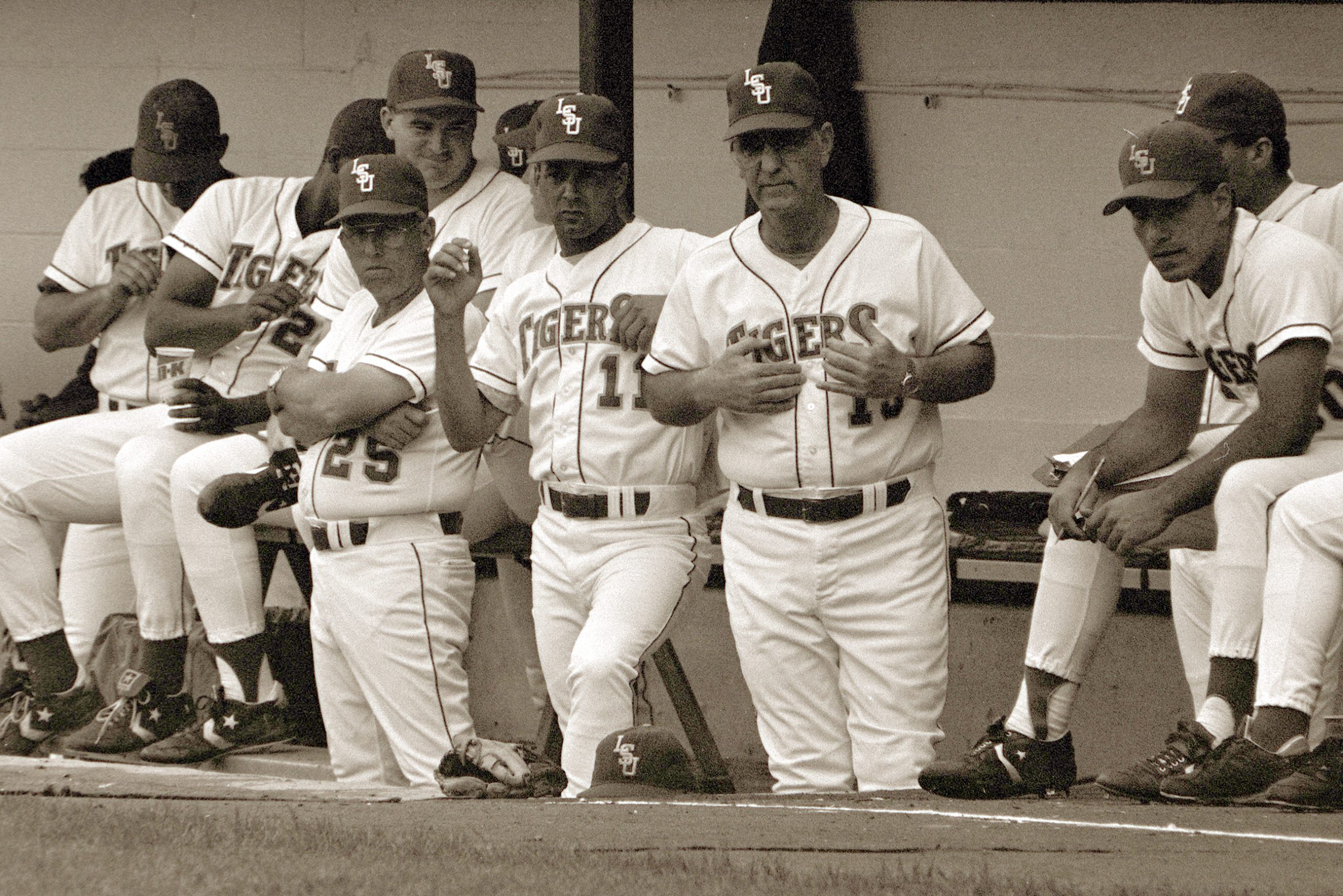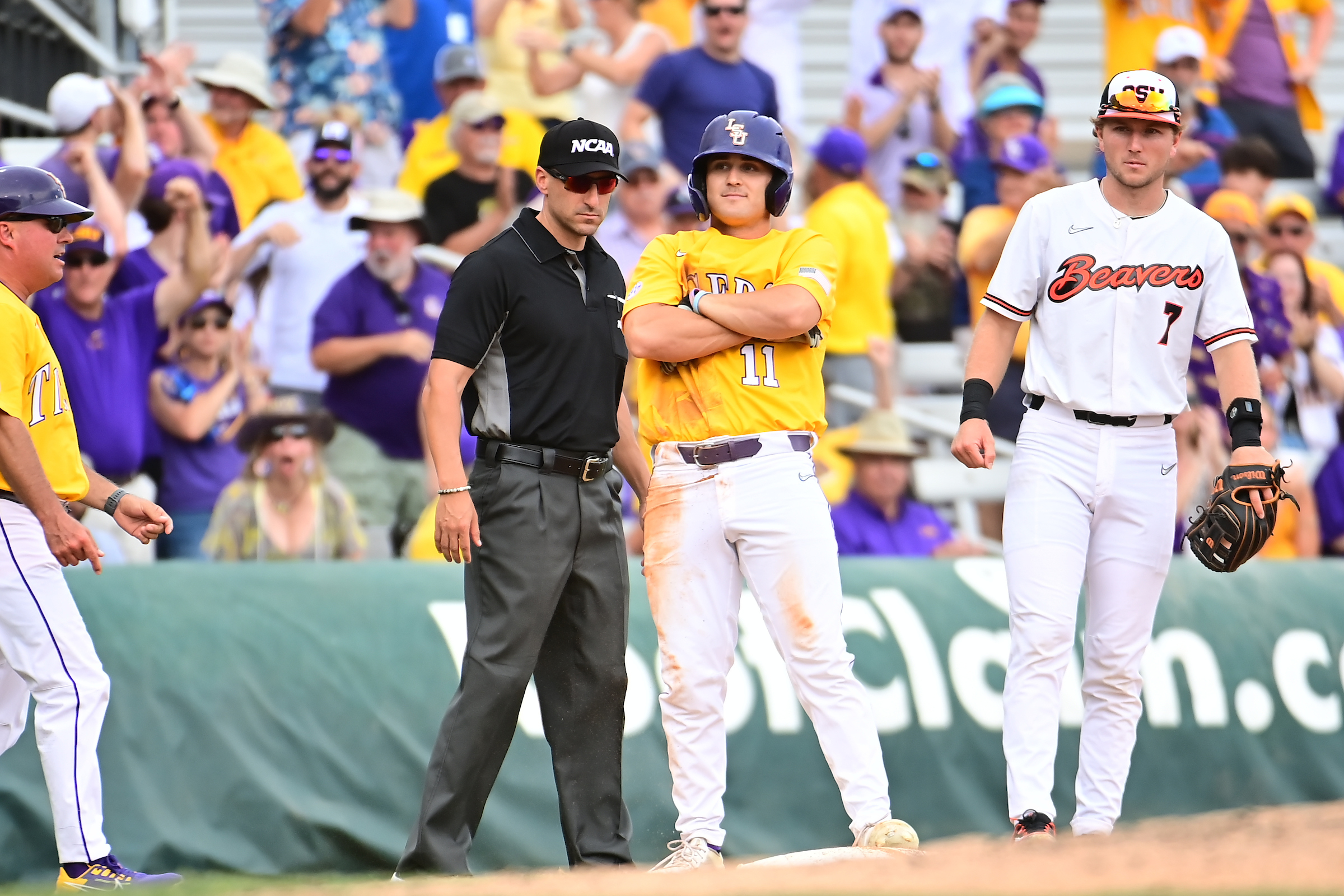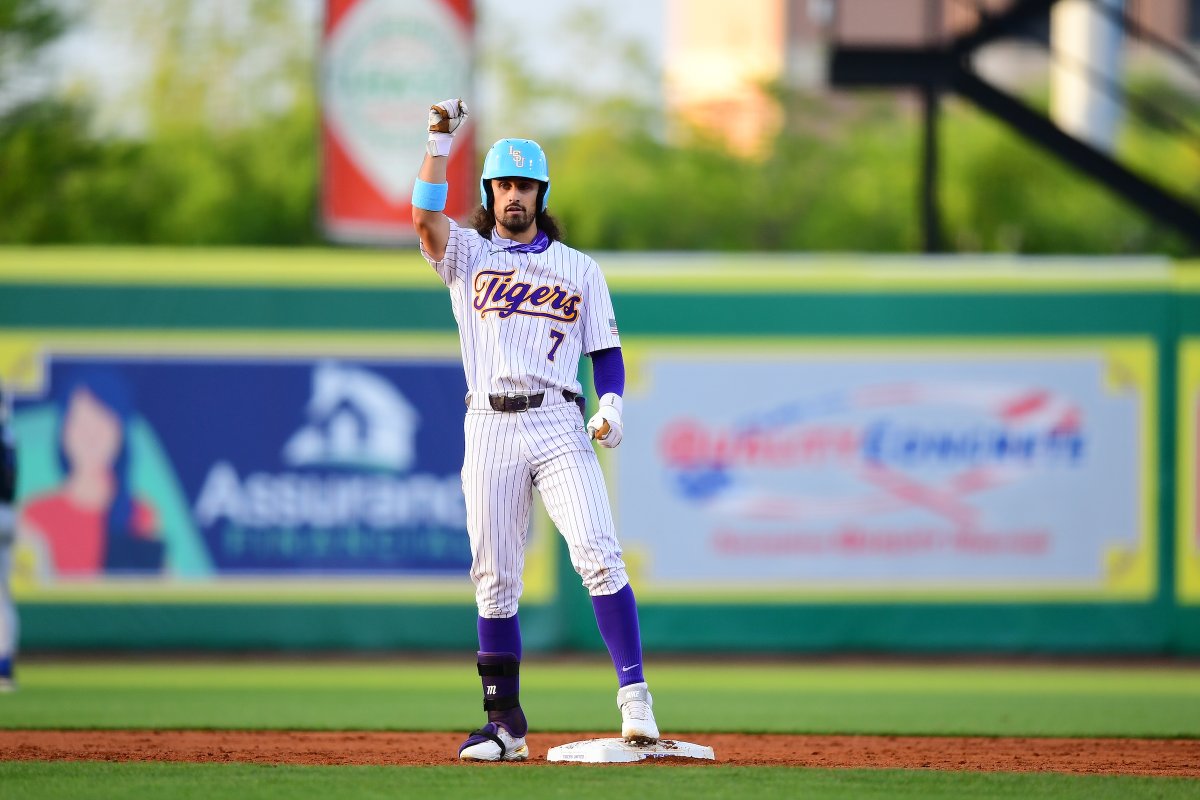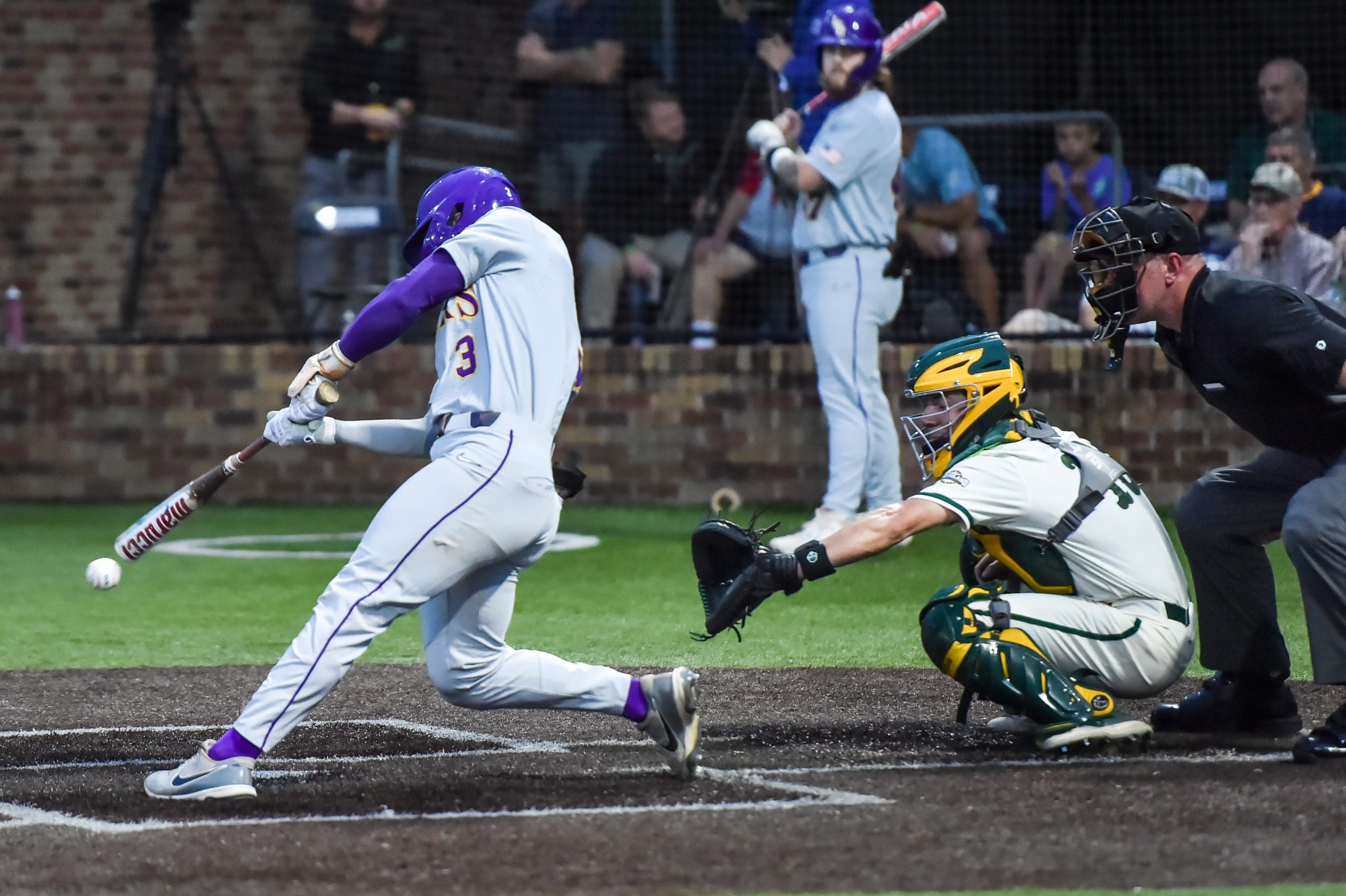
Editor’s note: In honor of former LSU baseball coach and athletic director Skip Bertman’s 82nd birthday on May 23, freelance writer Jim Mashek wrote a four-part series of the formative years of Bertman’s eventual five-time national champions dynasty. Mashek covered LSU baseball for the Morning Advocate in Baton Rouge from 1985 until 1989 and as a freelancer in 1990. This is Part 3.
By Jim Mashek
LSU was the No. 2 seed in the 1989 NCAA regional hosted by Texas A&M.
No. 1-ranked Texas A&M was 55-5, led by All-American infielders Chuck Knoblauch and John Byington.
The stage was set for a turning point in LSU baseball, four days in the blazing heat of Bryan-College Station, when the Tigers became Public Enemy No. 1.
Ben McDonald got the start in the Tigers’ tourney opener against UNLV but pitched only five innings before LSU struck for a tense 12-10 victory. In LSU’s second game, the Tigers faltered late and dropped a 6-4 decision to South Alabama.
Paul Byrd and Chad Ogea helped the Tigers stay alive the next day in victories over UNLV and South Alabama, while Texas A&M was breezing through the winners’ bracket. That set the stage for the championship round with LSU needing two victories in one day over the No. 1-ranked Aggies to make its third CWS appearance in four years.
McDonald worked seven strong innings and the LSU bats came alive in a 13-5 victory to force a winner-take-all game. Bertman used McDonald in left field for the final two innings while the Aggies licked their wounds. (McDonald, who has size 15 feet, said the A&M fans called him “Flipper” while he was playing the outfield.)
A group of boisterous A&M fans, about 200 strong, almost entirely male and in various stages of undress, attended every game LSU played in the regional. They did yells, danced in circles, hurled insults at the LSU bench, anything to get into the Tigers’ heads. At some point, someone in the LSU dugout used athletic tape to spell the order of the day:
“Pillage The Village.”
This was serious business.
“Nobody really gave us much of a chance, going in there, to A&M,” McDonald recalled. “There wasn’t quite as much pressure on us, compared to those guys. But we had a bunch of competitors. (Catcher) Mike Bianco, you’d want him in a foxhole with you. We weren’t scared. Our attitude was, well, to get to Omaha, we might as well go through the best. We had a little swagger to us.”
The heat at Texas A&M’s Olsen Field was incessant, pushing 100 degrees. Horseflies buzzed around the press box, and in the dugouts.
But after LSU forced the winner-take-all finale, the Tigers would again be the visiting team for the championship contest. They had about 2 ½ to three hours to kill between games.
“We took our stuff, our equipment, from the third-base dugout over to the first-base dugout,” LSU first baseman Pete Bush said. “(The Aggies) were watching us. We just went on about our business. We’d already played five games in four days, in that heat, so we were pretty tired.
“Bianco and I figured that we didn’t need to take batting practice before the second game. We told Smoke (Laval) and he said, `If you guys wanna go hit, go hit in the cage.’ Most of the guys just rested. Some of us took little naps.”
McDonald pointed out that the Texas A&M ticket office didn’t even print tickets for a possible second game, and in Bryan-College Station, the whole thing was being billed as some kind of coronation. But Bertman’s Tigers had played in all sorts of close games and had exceeded 50 victories themselves.
“Coach Bertman said, `Let’s try to win every inning,’” McDonald said.
“Either we get a run up on them, or it stays even. We were a pretty confident team, and I always thought we played with a lot of energy.”
Russ Springer was LSU’s starting pitcher for the championship game. The A&M fans chanted “Russss-elll, Russss-elll” during their entire at-bats, picking up in volume when Springer struggled with his control. Bertman went to his bullpen quickly, the same approach taken by Texas A&M coach Mark Johnson. The game stayed tight, and the drama was building.
Bertman brought the colorful Curtis Leskanic out of the bullpen against the Aggies in the late innings, and he was on top of his game.
Meanwhile, both Bertman and Johnson were running out of bench players. When it came to the top of the 11th inning, with two outs and a runner on second base, Bertman summoned backup infielder Pat Garrity, a freshman from New Orleans, as a pinch-hitter.
Garrity had 17 at bats all season, but he would replace third baseman Luis Garcia. Garcia had replaced starting third baseman Phil Espinosa for defensive purposes in the late innings.
“The A&M pitcher left a 2-2 breaking ball up, and it was a good pitch to hit,” said Garrity, who belted an RBI double off the top of the fence in right-center field putting the Tigers in front 5-4. “I was always a pretty good breaking-ball hitter. . .but yeah, I was surprised when Skip told me to grab a bat. I hadn’t had an at bat in six weeks.”
Leskanic recorded the first two outs in the bottom of the 11th and thought he had caught an A&M batter looking at a called third strike on a 3-2 pitch that caught the heart of the plate. The umpire wouldn’t ring him up, however, and Leskanic let out a loud protest, leading to a lot of commotion between the umpires and the LSU dugout.
Was Leskanic thrown out of the game?
“I think they were telling Skip to get me out of there,” Leskanic said. ”Officially, I guess it wasn’t an ejection.”
McDonald trotted in from the bullpen, ready to put out the fire to send the Tigers to Omaha. As fate would have it, a high chopper to Garrity hugged the third-base line in fair territory. Garrity fielded it cleanly and made the throw to Bush, his roommate on the road, to complete the feat.
A few hundred LSU fans poured onto the field, but most of the crowd of more than 4,000 stood silent, almost oblivious to what was happening before them.
Afterward, the impromptu party at the LSU hotel, the full-service Holiday Inn in College Station, went well past 2 in the morning. (Media members and LSU fans were also in attendance.) Six or seven hours later, the Tigers boarded their buses for the return trip to Baton Rouge.




Love LSU TIGER baseball